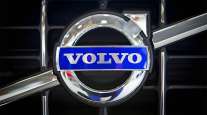The History of Trucking, On Display at Museums
This story appears in the Oct. 6 print edition of Transport Topics.
The gleaming old trucks housed in transportation museums across the country do more than offer visitors something pretty to see; they can provide a history lesson in how far the trucking industry has come.
For proof, look no further than the sleeper berth installed in the nose of a 1946 Fruehauf trailer.
“Drivers called it ‘the coffin’ because it has a door and no heat or ventilation,” said Sandra Dismukes, president of the C. Grier Beam Truck Museum in Cherryville, North Carolina. Today, of course, sleepers are attached to the truck and can be luxuriously appointed with leather seating, soft mattresses — and heat and air conditioning.
Interactive Map of Truck Museums
But it’s not just drivers’ sleeping arrangements that have evolved, it’s the business of trucking itself — from the number and type of companies in existence to who is driving the trucks. And preserving that legacy is as much a part of these museums’ missions as the trucks themselves.
“We’re committed to preserving this rich history of both Carolina Freight and the trucking industry,” said Dismukes, who, with her husband, Joe, for years worked at Carolina Freight.
“We have 14 vehicles, ranging from a 1927 Chevrolet to a 1962 Mack — and they’re all housed in the original terminal location of Carolina Freight,” Dismukes said.
The company was in business from 1931 until 1995, when it was acquired by Arkansas Best Corp. “It was the end of an era,” she said.
And part of her museum’s mission, which welcomes about 2,500 visitors annually, is offering people with memories of these old trucks an opportunity to share their stories.
“We interviewed a 90-year-old truck driver who’d driven and slept in one of these,” Dismukes said of the Fruehauf trailer, which is hooked to a 1947 Mack. Drivers brought their own sleeping bags or blankets, and Carolina Freight furnished the mattress and sheets, she said.
“He said [the truck] was a really good ride, as long as the trailer was full,” she said.
Keeping the trailer full was a priority for Cole’s Express, a family-owned carrier now memorialized at Cole Land Transportation Museum in Bangor, Maine. Jim Neville, director, said a Cole’s Express converted tank truck there is a visitor favorite.
“The company used to truck potatoes from Aroostook County, Maine, to all points south,” said Neville. “But they went up to Aroostook with an empty trailer, so [former Cole’s Express owner] Galen Cole designed and had made a 3,900-gallon tank that was mounted behind the cab and started bringing home heating oil to northern Maine. He’d sell it and bring back 50 loads of potatoes in the attached trailer.” Eventually, Cole’s Express built four such tank trucks.
The company was sold to Roadway Express in 1992. But 10 years earlier, Galen Cole was already soliciting vehicle donations for the museum he envisioned. Opened in 1983, the Cole Land Transportation Museum now displays more than 200 antique trucks and cars, including 11 trucks, wagons and hybrid vehicles used by Cole’s Express.
“We believe our museum has the largest collection of one highway carrier’s vehicles, from a horse-drawn wagon to turnpike 18-wheelers, on public display in America,” said Cole, the museum’s founder. “Our purpose is to preserve and display a cross-section of Maine’s land transportation history. We want people to understand the pioneer spirit and can-do attitude of the people of Maine.”
Along with the customized tank truck, Cole and Neville said museum favorites include a Ford Model T bearing a 1926 Ford Snowmobile Conversion Kit, and a 1919 Ford Model T Depot Hack, which, with its flip-down seats, was used to haul cargo to Maine’s lumber camps and people from the camps back to Bangor.
“We get 18,000 visitors a year,” said Neville. “They come from everywhere. Just last night we had folks from China, and some from Western Australia last week. We get a lot from the Maritimes in Canada, and we do get local folks, who are always amazed at what we have and kick themselves for not coming in sooner.”
Don Schumaker, curator of the Mack Truck Museum in Allentown, Pennsylvania, said visitors come to the Mack facility not only to see and touch the 30-odd antique Macks; some also come to find records, drawings and parts for old Mack trucks they own.
“Our archives are a unique part of the museum,” said Schumaker. “Before 1980, every Mack truck had a chassis number, and we
can provide copies of the sales records, the dealers who had them, and the components used to build the vehicle. We can also provide maintenance and operators’ manuals, and sometimes even photographs.”
The Mack museum is part of the Mack Customer Center, a facility that draws 10,000 visitors per year, including dealers. “The idea is bring Mack owners and dealers here to experience Mack from the beginning until today,” Schumaker said. “We’ve managed to save a lot of things and have this rich heritage, so in 1984, we thought it was time to start sharing it.”
Among the trucks currently on display: a 1909 Mack tour bus that Schumaker said is “the oldest Mack vehicle that exists,” and a Mack Model AC from World War I. Also of interest, he said, is a Mack B Model Pickup, renowned in the 1950s, ’60s and ’70s. “When Mack customers come in, they ask questions,” he said. “Someone in their family has usually driven a Mack truck or owned one.”
But for others, the museum may be the first opportunity to walk up to a big truck and touch it. “Yes, kids get to sit in some of them and pretend they’re driving,” Schumaker said. “Some people come for entertainment, and others come knowing a lot about Mack and the trucking industry. Still others are interested in the technological aspects of trucks.”
The Mack facility rotates part of its inventory, and Schumaker said several “new” vehicles were slated to arrive this month. And on the 26th and 27th of this month, the museum will host “Trucktober,” a museum event designed to appeal to members of antique-truck clubs.
“We’ll have a couple hundred antique vehicles here then, and they’ll all be trucks,” he said.
Not all the 190 vehicles at the National Automotive and Truck Museum of the U.S. (NATMUS) in Auburn, Indiana, are trucks. But John Webb, admissions director, said trucks draw the most interest. “People like the old Internationals, the old semi-trucks,” Webb said.
Located in the final two production buildings of the Auburn- Cord-Duesenberg Co., which made high-end automobiles in the early 20th century, NATMUS also features trucks made by White, Mack, McIntyre, Indiana and Noble. Webb said that Noble and Indiana trucks were made from about 1911 to the 1990s, and McIntyre trucks were made from 1907 to about 1915.
“Trucks exhibited here range from 1907 to modern concept trucks,” he said.
NATMUS opened in 1994 and now attracts about 15,000 visitors annually. “They come from all over the world,” Webb said, “New Zealand, South Africa, Australia.”
Webb said he would have answered more questions but had to get off the phone. “A big group of people just came in,” he said, “and I need to go see them.”




